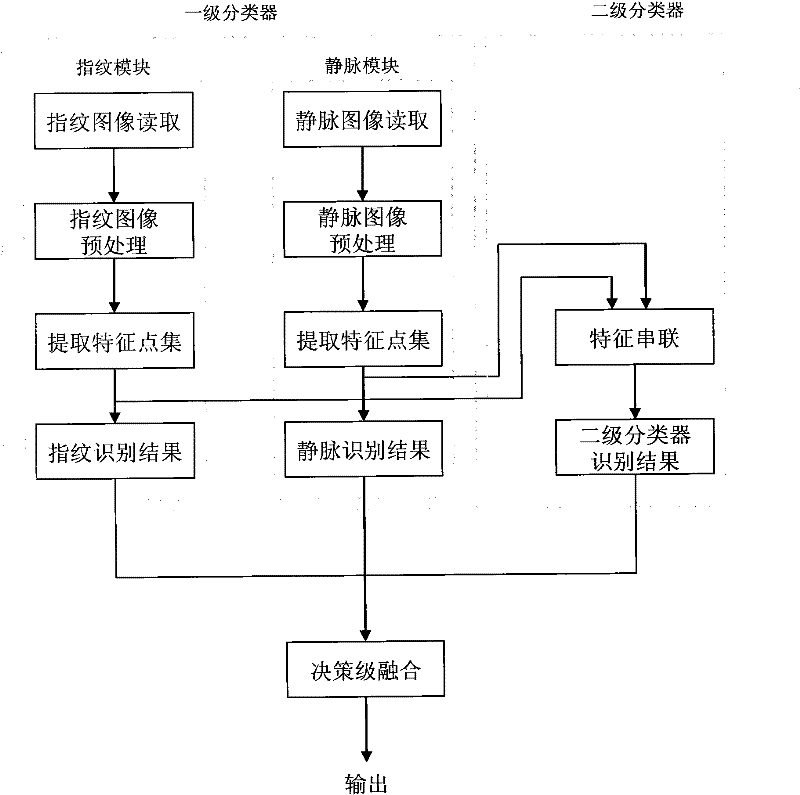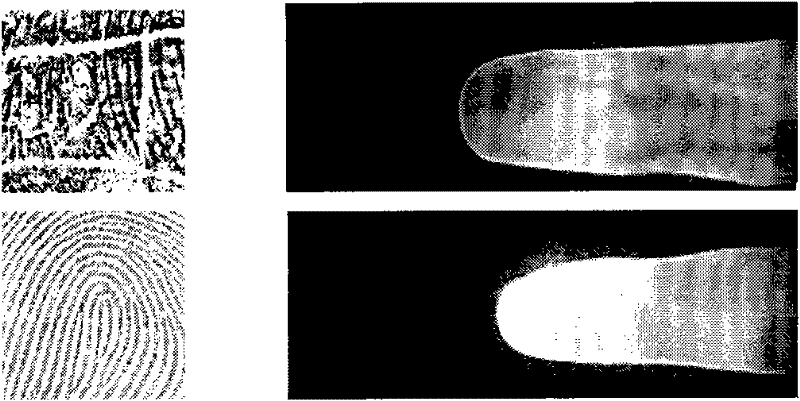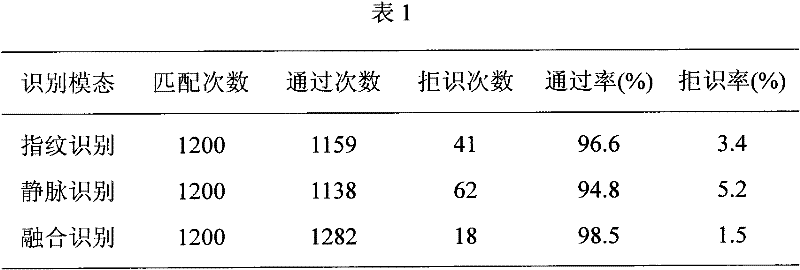Secondary classification fusion identification method for fingerprint and finger vein bimodal identification
A technology of fingerprint recognition and secondary classification, applied in the field of pattern recognition, can solve the problem of few vein recognition features, achieve high recognition rate and improve accuracy
- Summary
- Abstract
- Description
- Claims
- Application Information
AI Technical Summary
Problems solved by technology
Method used
Image
Examples
Embodiment Construction
[0022] The following examples describe the present invention in more detail:
[0023] 1 fingerprint identification
[0024] Fingerprint recognition method based on minutiae matching:
[0025] (1) First obtain the orientation map of the fingerprint image, use the orientation filtering method to enhance the image, and use the orientation information of the fingerprint, that is, the orientation map to binarize the image and refine it using the eight-neighborhood-based thinning algorithm.
[0026] (2) Then extract minutiae points, that is, endpoints and bifurcation points, and singular points, that is, center points and triangle points, from the thinned fingerprint image, and use the method of texture tracking to remove false feature points.
[0027] (3) Use the extracted center point and triangle point for registration, so that the input image and the template image are on the same standard.
[0028] (4) Perform minutiae matching operation on the registered image. The matching...
PUM
 Login to View More
Login to View More Abstract
Description
Claims
Application Information
 Login to View More
Login to View More - R&D
- Intellectual Property
- Life Sciences
- Materials
- Tech Scout
- Unparalleled Data Quality
- Higher Quality Content
- 60% Fewer Hallucinations
Browse by: Latest US Patents, China's latest patents, Technical Efficacy Thesaurus, Application Domain, Technology Topic, Popular Technical Reports.
© 2025 PatSnap. All rights reserved.Legal|Privacy policy|Modern Slavery Act Transparency Statement|Sitemap|About US| Contact US: help@patsnap.com



